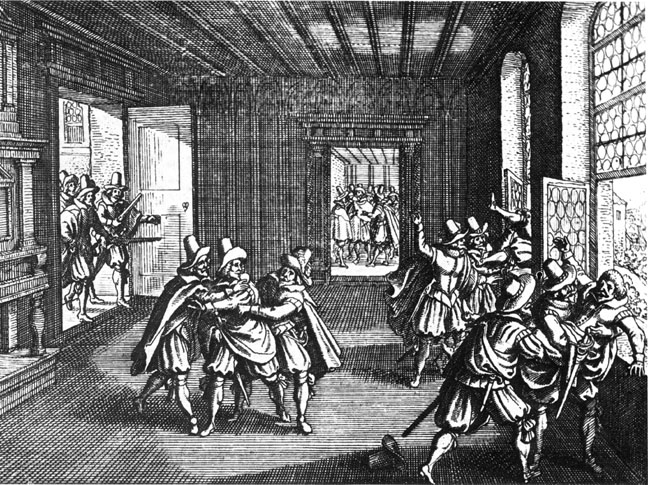Defenestration of Prague in 1618
By Erin Naillon
The Second Defenestration of Prague, like the first, was related to religion.
Trouble Brews
In 1617, the Czechs, who were largely Protestant, discovered that they were to have a Catholic ruler. Furthermore, the Church demanded that the construction of Protestant places of worship come to a halt; clerics claimed the land belonged to Catholics. The Protestants claimed that the land was royal, and saw a threat to their religious rights.
The Noblemen Unite
Two governors, Vilém Slavata of Chlum and Košumberk and Jaroslav Bořita of Martinice, were particularly objectionable to members of the Czech estates. The two were always willing to cause trouble for Protestant members of the Czech nobility. Several members of the estates, Jindřich Matyáš Thurn and Václav Budovec held a meeting on May 23, 1618, to plan a way to get the governors out of the way. When the next meeting was held, more of the nobility were present, and the group left the meeting place in Prague Castle and went to the Bohemian Chancellery. Slavata and Bořita were put on trial for violating the Right of Freedom of Religion. The verdict was a foregone conclusion; the governors were found guilty and thrown from the windows of the Chancellery along with their scribe, Filip Fabricius. The fall was sixteen meters.

After the Fall
Amazingly, all three survived the fall. Rather ignominiously, they survived by landing on a dung heap. Fabricius left Prague and fled for Vienna, where he told the emperor what had happened. Later, he was given the appropriate title of von Hohenfall, which means “of Highfall”.
The following year, 1618, saw the start of the Thirty Years’ War, and the deaths of many Czech noblemen



